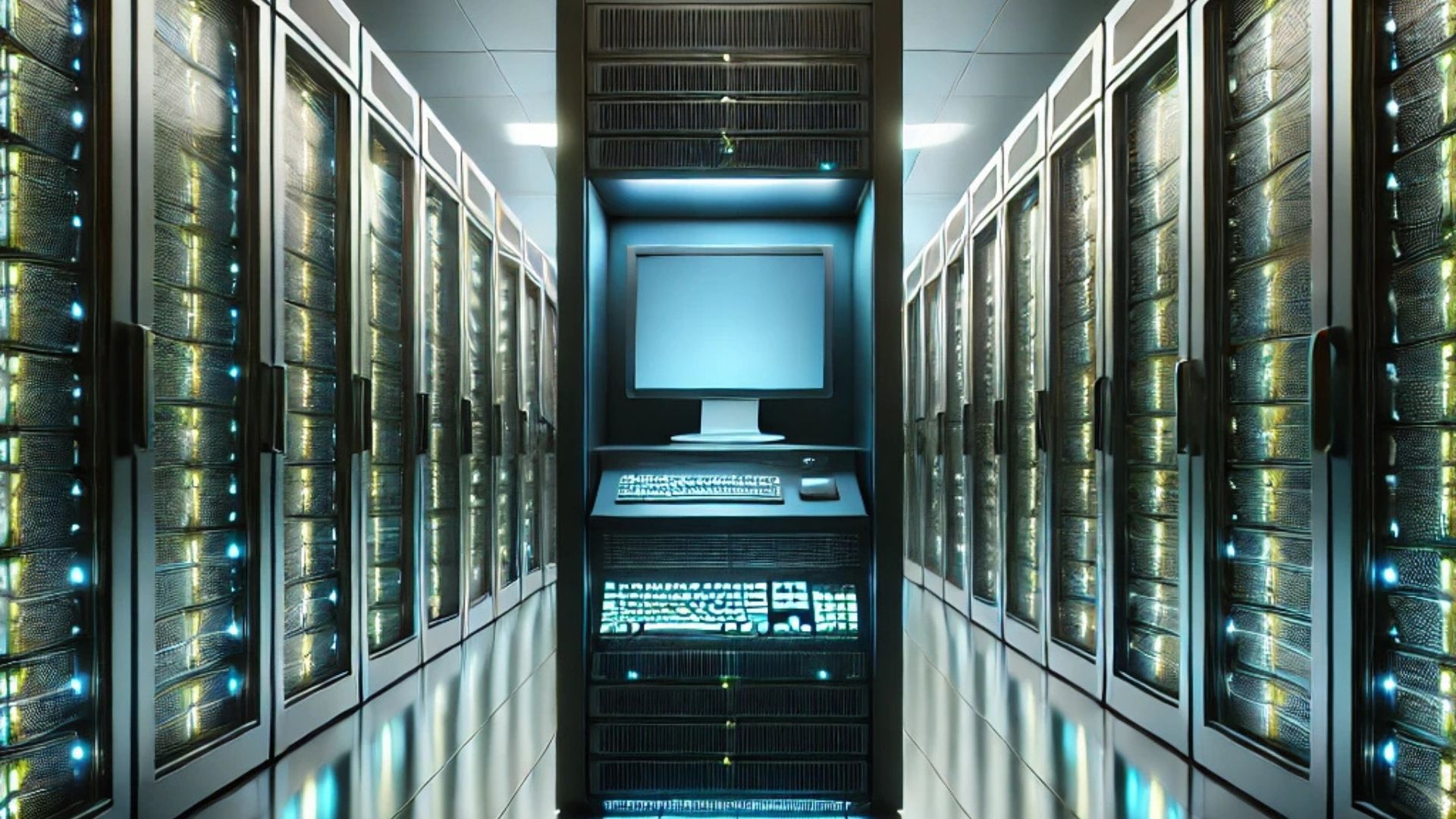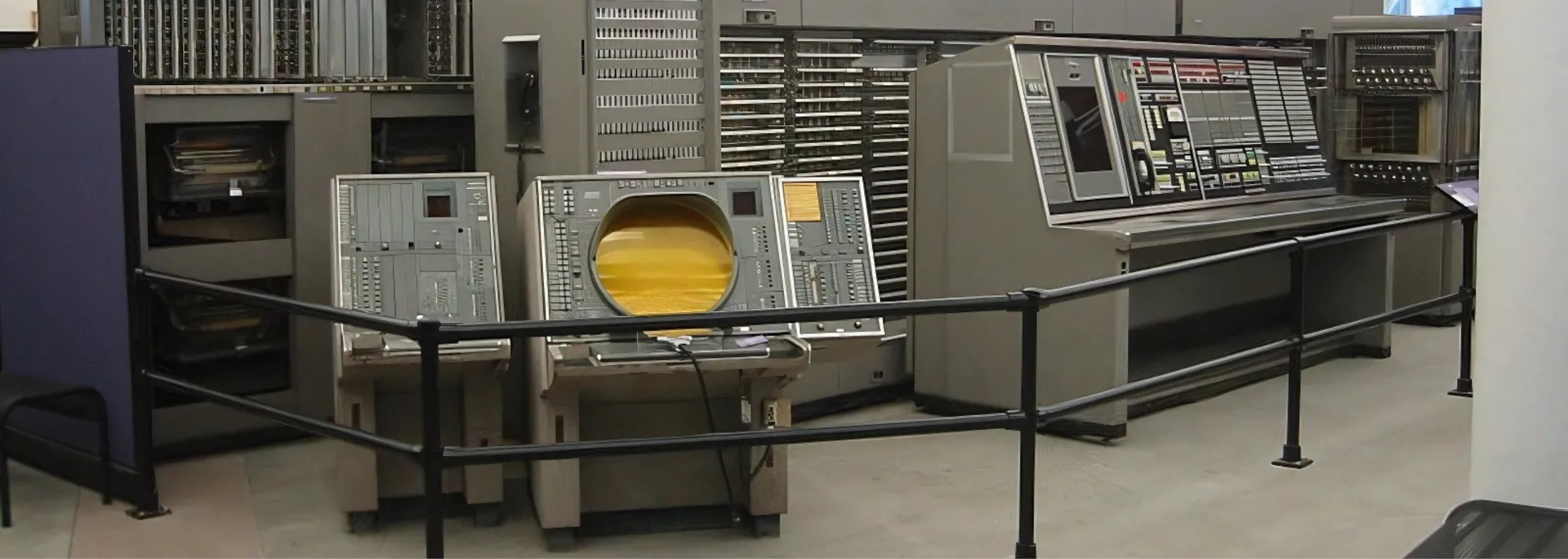Cloud basics: what is a mainframe?
What is a mainframe and how does it relate to cloud computing? Find out in our jargon-free guide.

If you've spent much time watching Hollywood blockbusters, you may have come across something called "the mainframe".
Its role is never quite clear, but one thing is certain – the hacker needs to break into it, fast. Lights flash, green text blinks and beads of sweat form on their forehead. Whatever it is they're trying to achieve, it's serious business.
In pop culture, then, a mainframe is a kind of supercomputer that's vital to the smooth running of planet Earth. But how about in real life? And how does it relate to cloud computing?
Before we hack into the concept of the mainframe and find out what it all means, a word about our new series of blogs: "cloud basics".
Cloud basics
It's an all too common experience. You go to buy a phone, or get your car fixed, or have the damp in your attic surveyed. You want answers to simple questions like "What does it do?", "What are the alternatives?" and "How much does it cost?"
Instead, you're inundated with jargon. You might as well be talking to a technical manual on legs. It's unhelpful and ultimately disempowering, bringing you no closer to an informed decision.
At Ascend Cloud Solutions, we're well aware that this is an experience many customers have when exploring their cloud options. Too much tech speak, not enough plain talking.
Well, to this, we say, "Enough!" and "No more!" That's why we've put together this series of blog posts about essential cloud computing concepts – and why they matter to your organisation.
So. The mainframe. What is it, what does it do and how does it fit in with the ever-changing world of cloud computing?
What is a mainframe?
Put most simply, a mainframe is a high-performance computer with lots of memory and lots of data processors. It can handle billions of simple calculations and transactions as they arise. Swipe your card to pay for your shopping and a mainframe processes the transaction instantly.They're mostly used by companies that require high levels of service availability.
From the 1950s to the 1980s, a mainframe was a large cabinet that held a computer system's central processing unit (CPU). Today, mainframes – or data servers, as they're known – are smaller and more powerful.
Mainframes and supercomputers: what's the difference?
The philosopher Isaiah Berlin once said there were two types of thinkers: the hedgehog, who had one big idea, and the fox, who had lots of little ones.
A supercomputer is a hedgehog. It's much faster than a mainframe. And unlike a mainframe, it works best when tackling a single large problem – weather forecasting, say, or medical modelling.
By contrast, a mainframe is best at dealing with a high volume of inputs and outputs – not one big problem but tonnes of small, simple ones. This is why it's favoured by companies that handle large amounts of transactions around the clock.
Are mainframes a thing of the past?
These days, it's all about the cloud, right? Physical hardware is a thing of the past. Doesn't that make mainframes the tech equivalent of a woolly mammoth?
In fact, the mainframe is still an essential tool for banks, airlines, global retailers and Fortune 100 companies. According to an IBM report, mainframes handle around 70% of the world's IT workloads.
So next time you tap your card at the shops, just think – it wouldn't be possible without a mainframe.
How big is a mainframe?
In the old days, a mainframe would fill a room. As you'd expect, it was energy-intensive, requiring plenty of electricity to power it and plenty of air-con to cool it down.
Today's equivalents of these "Big Iron" machines are about the size of a large fridge and the weight of a car. They're designed to be racked with other devices, whether at an on-premises data centre or at a hyper-facility.
How does a modern mainframe work?
Yesterday's mainframes were built like tanks: their size matched their power. They had a single processor or central processing unit (CPU) that held the whole IT system together.

But as the 20th century went by, technology got smaller. And smaller. And smaller. We've gone from the age of the mainframe to the age of the system on a chip.
This means that mainframes have got smaller but more powerful. They contain system assist processors (SAPs) that move data around as quickly as possible. They also contain an astonishing number of processing cores.
Take the industry-leading IBM z13. It can have up to 160 I/O (input/output) cards, each with its own processing core. In conjunction with those SAPs, this means high performance and large workloads.
Who uses mainframes?
Mainframes are used by services that need a high level of service availability. If you run a small bakery, it's not the end of the world if your card machine goes down for an hour. But if you're a government agency, utility company, bank or even online retailer, uptime is all.
Have cloud-based environments replaced mainframes?
In recent years, cloud adoption has gone through the roof, unlocking all manner of business benefits for companies of all sizes. But many enterprises still rely on mainframes. They've just merged them with cloud-based solutions.
Sure, some companies let their mainframes tick along in the background without modernisation. But airlines, banks and other service providers that need zero downtime modernise and merge.
Take the example of airlines. A customer will check their flight details on an app. These details need to be updated immediately in the event of a delay or cancellation. These updates are handled by a mainframe.
Modernisation has never meant throwing the baby out with the bathwater. Instead, many enterprises have combined the best of both worlds – the processing power of a mainframe with the cost-effectiveness of cloud solutions.
Ascend is a team of cloud computing experts based in Cork, Ireland. Are you looking for
innovative cloud solutions without the jargon?
Get in touch today for a free consultation.












